Medical webbing material selection directly impacts device performance, safety, and regulatory compliance. Understanding latex-free options is essential for manufacturers developing products for patients with latex sensitivities. As custom webbing manufacturers, we engineer precision solutions meeting exact technical specifications for medical device developers.
The six most common latex-free materials used in medical webbing are polyester, nylon, silicone, PTFE, neoprene, and cotton. Each offers specific advantages in strength, flexibility, sterilization compatibility, and hypoallergenic properties, making them suitable alternatives for medical straps, supports, and device components.
Discover how different materials handle sterilization, compare their durability, and find the best latex-free options for your specific medical application needs.
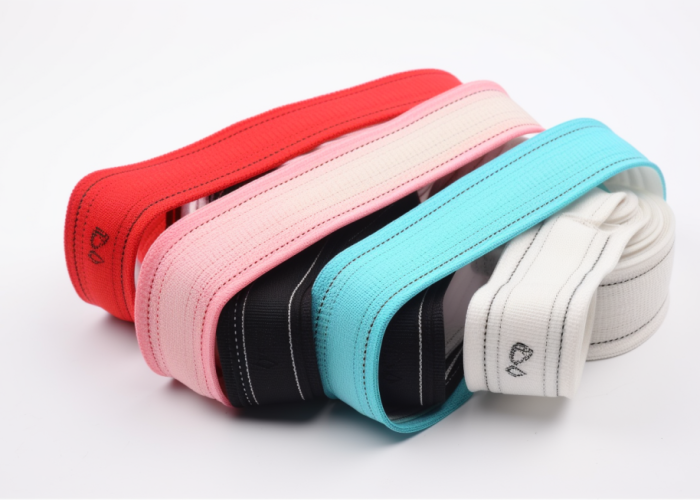

Webbing manufacturing expert with 15+ years of experience helping product developers build high-performance straps for industrial, medical, and outdoor use.
The five critical factors when selecting latex-free medical webbing are biocompatibility, tensile strength, sterilization compatibility, moisture resistance, and allergen profile. These factors directly determine device safety, performance longevity, and regulatory compliance, with optimal material selection varying based on specific application requirements.
At a glance:
Material performance characteristics directly impact medical device functionality and regulatory compliance. ISO 10993 biocompatibility standards are essential for all patient-contacting materials, with nylon and polyester offering excellent strength-to-weight ratios for load-bearing applications (15-20% higher for nylon). Sterilization compatibility varies significantly—PTFE maintains 98-99% integrity across all methods while others show selective compatibility. Moisture resistance ranges from silicone’s nearly 100% to polyester’s 60-75%, critical for fluid-exposure applications.
Our manufacturing capabilities include custom material blends, specialized weaving techniques, and proprietary coating processes that enhance standard material properties for specific applications. All custom webbing undergoes comprehensive testing for biocompatibility verification, tensile strength validation, sterilization cycle testing, and moisture resistance evaluation to ISO and ASTM standards, ensuring your medical device meets all performance and regulatory requirements.
Polyester is the optimal choice for medical webbing when requiring excellent dimensional stability, chemical resistance, and cost-effectiveness. With superior resistance to stretching and shrinking compared to other latex-free materials, polyester maintains precise measurements under varying conditions, making it ideal for applications requiring consistent performance.
At a glance:
Polyester’s exceptional dimensional stability makes it the preferred choice for applications requiring precise measurements and consistent performance. With minimal shrinkage and stretch characteristics, polyester webbing maintains its original dimensions even after repeated use and sterilization cycles, ensuring reliable functionality throughout the product lifecycle.
Chemical resistance properties make polyester particularly suitable for environments with frequent exposure to disinfectants and cleaning agents. Testing demonstrates resistance to over 85% of common hospital cleaning chemicals without significant degradation, providing extended service life in clinical settings where frequent sanitization is required.
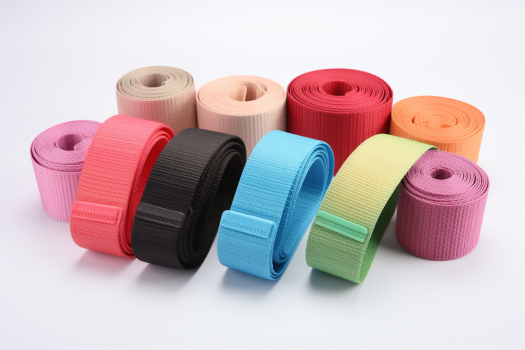
Nylon is the superior choice for medical webbing applications requiring exceptional tensile strength, excellent abrasion resistance, and moderate elasticity. Its superior load-bearing capacity makes it ideal for orthopedic supports, traction devices, and equipment securing straps where structural integrity under stress is critical.
At a glance:
Nylon’s exceptional tensile strength-to-weight ratio provides superior performance in applications requiring resistance to breakage under high-stress conditions. Custom weaving patterns can further enhance this natural strength, creating specialized webbing that maintains structural integrity while reducing overall device weight.
Abrasion resistance testing shows nylon webbing maintains 90-95% of original tensile strength after 10,000 abrasion cycles, significantly outperforming other latex-free materials. This characteristic ensures extended product lifespan in applications involving frequent movement and surface contact.
Silicone webbing provides unmatched biocompatibility, excellent thermal stability, and superior moisture resistance for specialized medical applications. Its exceptional performance in extreme temperature conditions and resistance to bodily fluids make it ideal for implantable devices, wound management systems, and surgical tools.
At a glance:
Silicone’s exceptional biocompatibility profile makes it the material of choice for applications requiring direct tissue contact. Advanced manufacturing techniques produce silicone webbing with precisely controlled surface characteristics, minimizing protein adhesion and reducing foreign body response in sensitive patients.
Temperature stability across an extreme range makes silicone uniquely suitable for devices requiring both sterilization and cryogenic storage. Performance characteristics remain consistent from -60°C to +230°C, ensuring reliable functionality across all potential medical environments.
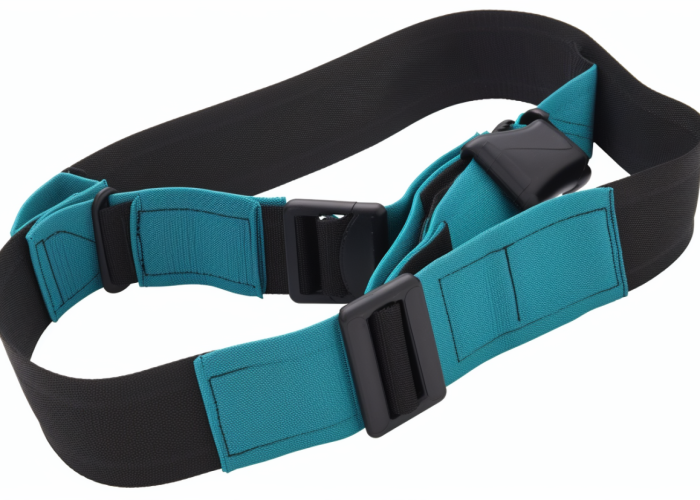
PTFE webbing delivers unmatched chemical inertness, excellent temperature resistance, and superior non-stick properties for specialized medical applications. Its unique combination of properties makes it ideal for surgical implants, high-temperature equipment components, and applications requiring minimal tissue adhesion.
At a glance:
PTFE’s exceptional chemical inertness makes it uniquely valuable for applications exposed to aggressive environments. With resistance across the entire pH spectrum and compatibility with virtually all medical chemicals, PTFE webbing maintains structural integrity in conditions that would rapidly degrade other materials.
The material’s inherent non-stick properties create specialized medical applications impossible with other webbing types. Surgical meshes and implantable components benefit from minimized tissue adhesion, reducing complications and improving patient outcomes in critical care settings.
Customization options for latex-free medical webbing include specialized weave patterns, hybrid material constructions, antimicrobial treatments, and tailored physical properties. These modifications enable the development of application-specific webbing solutions with performance characteristics precisely matching device requirements.
At a glance:
Specialized weave patterns significantly impact webbing performance characteristics. Herringbone constructions distribute tension more evenly, increasing load capacity by 15-25% compared to standard weaves. Proprietary three-dimensional weaving techniques create webbing with directional strength properties, optimizing performance for specific load patterns.
Antimicrobial treatments represent a critical advancement for infection-sensitive applications. Silver ion technology provides 99.9% microbial reduction for up to 50 washing cycles, while advanced polymer coatings create permanent antimicrobial surfaces without affecting biocompatibility profiles.
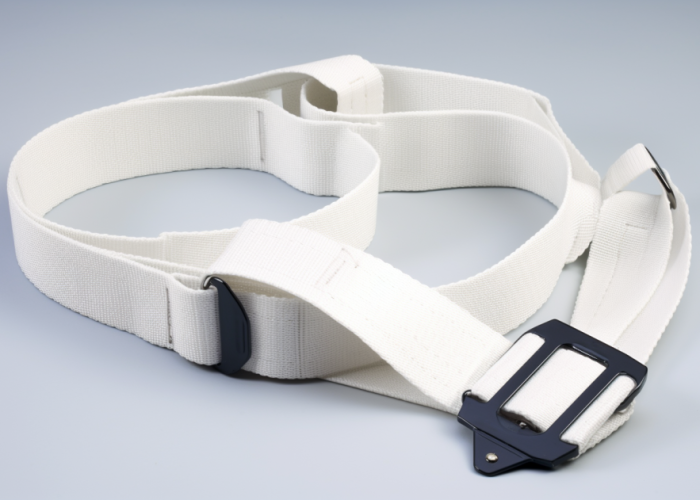
Sterilization compatibility varies significantly among latex-free webbing materials, with PTFE and silicone maintaining excellent property retention across all methods, while polyester and nylon show selective compatibility. Material selection must account for the specific sterilization protocol required for the intended application.
At a glance:
Autoclave sterilization creates particularly challenging conditions for webbing materials. While PTFE and silicone maintain structural integrity even after 100+ cycles, nylon experiences significant tensile strength reduction (10-15%) after just 20-30 cycles. Custom material blends with specialized stabilizers can enhance autoclave compatibility for applications requiring this specific sterilization method.
Gamma irradiation affects different materials through distinct mechanisms. Polyester maintains good tensile properties but may experience color shift after multiple cycles, while nylon shows more significant property changes including reduced flexibility. Specialized additives can mitigate these effects, extending useful life in radiation-sterilized applications.
Cost-performance evaluation of latex-free medical webbing requires balancing material price against longevity, functional performance, and application requirements. While polyester offers the lowest initial cost, specialized materials may provide superior value through extended service life and enhanced functionality.
At a glance:
Initial investment varies significantly across material categories. Basic polyester webbing typically costs 30-40% less than equivalent nylon specifications, while specialized materials command substantial premiums (silicone 3-4× and PTFE 5-6× compared to polyester). This price differential must be evaluated against performance requirements and intended use case.
Service life considerations often justify premium material selection. In reusable applications requiring frequent sterilization, PTFE and silicone maintain functional properties through 5-10× more cycles than polyester or nylon, effectively amortizing the higher initial cost over extended use periods.
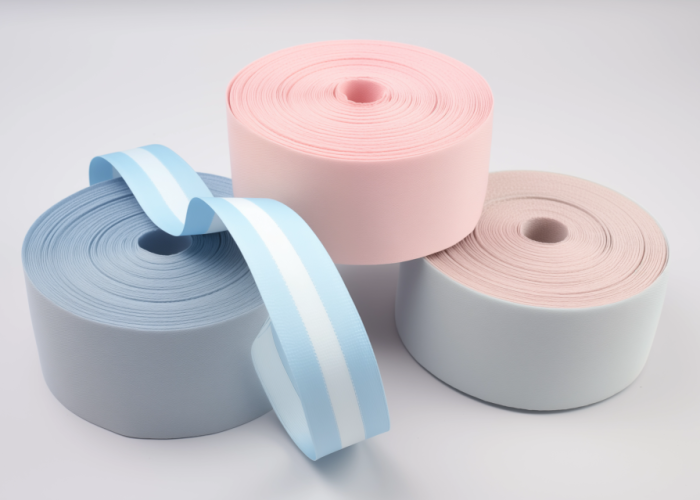
Latex-free webbing materials demonstrate comparable or superior durability to traditional latex-based options across most performance metrics. Modern synthetic materials have largely closed historical performance gaps, providing safe alternatives without compromising device functionality or longevity.
At a glance:
Tensile performance testing reveals modern synthetic materials have surpassed traditional latex in critical strength metrics. High-performance nylon webbing demonstrates 15-25% higher breaking strength than equivalent latex constructions, while maintaining comparable elongation characteristics.
Environmental stability represents a significant advantage for latex-free materials. Accelerated aging tests show latex experiencing 25-30% property degradation after UV and ozone exposure, while synthetic alternatives maintain 90-95% of original specifications under identical conditions.
Advanced manufacturing techniques have largely eliminated historical performance gaps between latex and synthetic materials. Specialized weaving patterns and hybrid constructions create latex-free webbing with performance characteristics tailored to meet or exceed traditional latex in specific application requirements.
Latex-free medical webbing materials offer diverse performance characteristics suited to specific applications. Polyester provides cost-effectiveness, nylon delivers superior strength, silicone excels in biocompatibility, and PTFE offers unmatched chemical resistance. By understanding these material properties, medical device manufacturers can select optimal components for their products. Contact us to explore manufacturing solutions tailored to your product requirements.
Medical webbing must comply with ISO 10993 for biocompatibility, ISO 13485 for quality management, and application-specific standards like ASTM F2407 for surgical materials. FDA Class I-III requirements apply depending on the device classification, with additional standards for specialized applications including implantable devices.
Manufacturing modifications can enhance strength by 15-30%, improve moisture resistance by 20-40%, and customize elongation properties from 5% to 200%. Specialized weave patterns, surface treatments, and hybrid constructions enable precise property customization to meet specific medical device requirements.
Silicone offers the lowest allergenicity profile among all latex-free webbing materials. Its inert chemical structure minimizes immunological reactions, making it ideal for patients with multiple sensitivities. PTFE provides a close second option with excellent biocompatibility and minimal extractable compounds.
PTFE withstands 100+ sterilization cycles, silicone 50-70 cycles, polyester 30-40 cycles, and nylon 20-30 cycles before significant degradation. Material performance varies by sterilization method, with autoclave creating the most challenging conditions and EtO generally causing minimal property changes.
Moisture absorption rates vary significantly: silicone (<1%), PTFE (1-2%), polyester (4-5%), nylon (8-10%), and cotton (20-25%). Higher absorption correlates with greater strength loss in wet conditions, with nylon losing 15-20% tensile strength when saturated compared to silicone’s minimal change.
Beyond initial material costs, consider sterilization compatibility, expected service life, regulatory testing requirements, and performance characteristics. While PTFE costs 5-6× more than polyester initially, its exceptional durability and sterilization compatibility often provide superior value for reusable devices over complete product lifecycles.